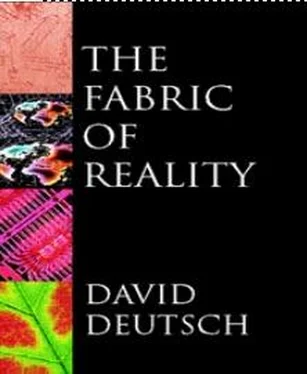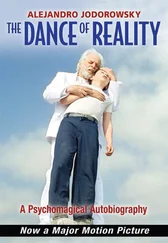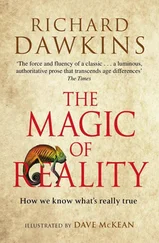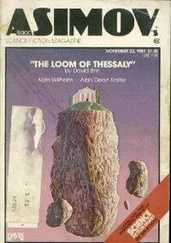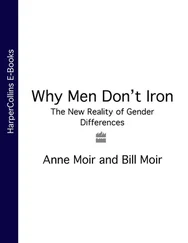David Deutch - The Fabric of Reality
Здесь есть возможность читать онлайн «David Deutch - The Fabric of Reality» весь текст электронной книги совершенно бесплатно (целиком полную версию без сокращений). В некоторых случаях можно слушать аудио, скачать через торрент в формате fb2 и присутствует краткое содержание. ISBN: , Жанр: Физика, Философия, на английском языке. Описание произведения, (предисловие) а так же отзывы посетителей доступны на портале библиотеки ЛибКат.
- Название:The Fabric of Reality
- Автор:
- Жанр:
- Год:неизвестен
- ISBN:0-7139-9061-9
- Рейтинг книги:4 / 5. Голосов: 2
-
Избранное:Добавить в избранное
- Отзывы:
-
Ваша оценка:
- 80
- 1
- 2
- 3
- 4
- 5
The Fabric of Reality: краткое содержание, описание и аннотация
Предлагаем к чтению аннотацию, описание, краткое содержание или предисловие (зависит от того, что написал сам автор книги «The Fabric of Reality»). Если вы не нашли необходимую информацию о книге — напишите в комментариях, мы постараемся отыскать её.
The Fabric of Reality — читать онлайн бесплатно полную книгу (весь текст) целиком
Ниже представлен текст книги, разбитый по страницам. Система сохранения места последней прочитанной страницы, позволяет с удобством читать онлайн бесплатно книгу «The Fabric of Reality», без необходимости каждый раз заново искать на чём Вы остановились. Поставьте закладку, и сможете в любой момент перейти на страницу, на которой закончили чтение.
Интервал:
Закладка:
10
The Nature of Mathematics
The ‘fabric of reality’ that I have been describing so far has been the fabric of physical reality. Yet I have also referred freely to entities that are nowhere to be found in the physical world — abstractions such as numbers and infinite sets of computer programs. Nor are the laws of physics themselves physical entities in the sense that rocks and planets are. As I have said, Galileo’s ‘Book of Nature’ is only a metaphor. And then there are the fictions of virtual reality, the non-existent environments whose laws differ from the real laws of physics. Beyond those are what I have called the ‘Cantgotu’ environments, which cannot even be rendered in virtual reality. I have said that there exist infinitely many of those for every environment that can be rendered. But what does it mean to say that such environments ‘exist’? If they do not exist in reality, or even in virtual reality, where do they exist?
Do abstract, non-physical entities exist? Are they part of the fabric of reality? I am not interested here in issues of mere word usage. It is obvious that numbers, the laws of physics, and so on do ‘exist’ in some senses and not in others. The substantive question is this: how are we to understand such entities? Which of them are merely convenient forms of words, referring ultimately only to ordinary, physical reality? Which are merely ephemeral features of our culture? Which are arbitrary, like the rules of a trivial game that we need only look up? And which, if any, can be explained only in a way that attributes an independent existence to them? Things of this last type must be part of the fabric of reality as defined in this book, because one would have to understand them in order to understand everything that is understood.
This suggests that we ought to apply Dr Johnson’s criterion again. If we want to know whether a given abstraction really exists, we should ask whether it ‘kicks back’ in a complex, autonomous way. For example, mathematicians characterize the ‘natural numbers’ 1, 2, 3,… in the first instance through a precise definition such as:
1 is a natural number.
Each natural number has precisely one successor, which is also a natural number.
1 is not the successor of any natural number.
Two natural numbers with the same successor are the same.
Such definitions are attempts to express abstractly the intuitive physical notion of successive amounts of a discrete quantity. (More precisely, as I explained in the previous chapter, that notion is really quantum-mechanical.) The operations of arithmetic, such as multiplication and addition, and further concepts such as that of 1 prime number, are then defined with reference to the ‘natural numbers’. But having created abstract ‘natural numbers’ through that definition, and having understood them through that intuition, we find that there is a lot more that we still do not understand about them. The definition of a prime number fixes once and for all which numbers are primes and which are not. But the understanding of which numbers are prime — for instance, how prime numbers are distributed on very large scales, how clumped they are, how ‘random’ they are, and why — involves a wealth of new insights and new explanations. Indeed, it turns out that number theory is a whole world (the term is often used) in itself. To understand numbers more fully we have to define many new classes of abstract entities, and postulate many new structures and connections among those structures. We find that some of these abstract structures are related to other intuitions that we already had but which, on the face of it, had nothing to do with numbers — such as symmetry, rotation, the continuum, sets, infinity, and many more. Thus, abstract mathematical entities we think we are familiar with can nevertheless surprise or disappoint us. They can pop up unexpectedly in new guises, or disguises. They can be inexplicable, and then later conform to a new explanation. So they are complex and autonomous, and therefore by Dr Johnson’s criterion we must conclude that they are real. Since we cannot understand them either as being part of ourselves or as being part of something else that we already understand, but we can understand them as independent entities, we must conclude that they are real, independent entities.
Nevertheless, abstract entities are intangible. They do not kick back physically in the sense that a stone does, so experiment and observation cannot play quite the same role in mathematics as they do in science. In mathematics, proof plays that role. Dr Johnson’s stone kicked back by making his foot rebound. Prime numbers kick back when we prove something unexpected about them especially if we can go on to explain it too. In the traditional view, the crucial difference between proof and experiment is that a proof makes no reference to the physical world. We can perform a proof in the privacy of our own minds, or we can perform a proof trapped inside a virtual-reality generator rendering the wrong physics. Provided only that we follow the rules of mathematical inference, we should come up with the same answer as anyone else. And again, the prevailing view is that, apart from the possibility of making blunders, when we have proved something we know with absolute certainty that it is true.
Mathematicians are rather proud of this absolute certainty, and scientists tend to be a little envious of it. For in science there is no way of being certain of any proposition. However well one’s theories explain existing observations, at any moment someone may make a new, inexplicable observation that casts doubt on the whole of the current explanatory structure. Worse, someone may reach a better understanding that explains not only all existing observations but also why the previous explanations seemed to work but are nevertheless quite wrong. Galileo, for instance, found new explanation of the age-old observation that the ground beneath our feet is at rest, an explanation that involved the ground actually moving. Virtual reality — which can make one environment seem to be another — underlines the fact that when observation is the ultimate arbiter between theories, there can never be any certainty that an existing explanation, however obvious, is even remotely true. But when proof is the arbiter, it is supposed, there can be certainty.
It is said that the rules of logic were first formulated in the hope that they would provide an impartial and infallible method of resolving all disputes. This hope can never be fulfilled. The study of logic itself revealed that the scope of logical deduction as a means of discovering the truth is severely limited. Given substantive assumptions about the world, one can deduce conclusions; but the conclusions are no more secure than the assumptions. The only repositions that logic can prove without recourse to assumptions are tautologies — statements such as ‘all planets are planets’, which assert nothing. In particular, all substantive questions of science lie outside the domain in which logic alone can settle disputes. But mathematics, it is supposed, lies inside that domain. Thus mathematicians seek absolute but abstract truth, while scientists console themselves with the thought that they can gain substantive and useful knowledge of the physical world. But they must accept that this knowledge comes without guarantees. It is forever tentative, forever fallible. The idea that science is characterized by ‘induction’, a method of justification which is supposed to be a slightly fallible analogue of logical deduction, is an attempt to make the best of this perceived second-class status of scientific knowledge. Instead of deductively justified certainties, perhaps we can make do with inductively justified near-certainties.
Читать дальшеИнтервал:
Закладка:
Похожие книги на «The Fabric of Reality»
Представляем Вашему вниманию похожие книги на «The Fabric of Reality» списком для выбора. Мы отобрали схожую по названию и смыслу литературу в надежде предоставить читателям больше вариантов отыскать новые, интересные, ещё непрочитанные произведения.
Обсуждение, отзывы о книге «The Fabric of Reality» и просто собственные мнения читателей. Оставьте ваши комментарии, напишите, что Вы думаете о произведении, его смысле или главных героях. Укажите что конкретно понравилось, а что нет, и почему Вы так считаете.
